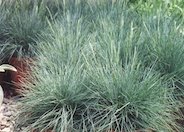
Common name:Elija Blue Fescue
Botanical name:Festuca glauca 'Elija Blue'
The 'Elijah Blue' is a dwarf variety with gray blue (but sometimes white-looking) foliage. It should receive sun and little summer watering.
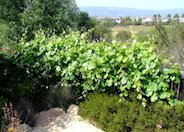
Common name:European Grapevine
Botanical name:Vitis vinifera
This vine grows 20'-30' long. Many species of this vine produce today's wines and grapes. There are thousands of species worldwide, but this plant originated in Europe. Vitis is a woody perennial that climbs its way around the supports. It does better with long, warm to hot summers, with mild winters. Frost will kill the young shoots. Vitis does not do well with humidity, as it promotes disease. Well-drained soil is important also.
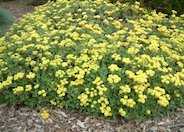
Common name:Sulfur Flower
Botanical name:Eriogonum umbellatum
This plant is a low, woody perennial growing 1'-2' high with a 3'-4' spread, having dark green foliage and attractive yellow summer flowers. It is a CA native that is drought tolerant. It attracts butterflies and beneficial insects.
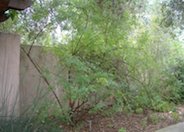
Common name:Blue Elderberry
Botanical name:Sambucus mexicana
The Blue Elderberry is a deciduous shrub that grows 4'-10' tall or tree that reaches up to 40' high. The leaves of this plant have 5-9 leaflets with white spring flower clusters developing into blue berries. The Blue Elderberry is a native to California, is drought tolerant and is a beneficial insect plant.
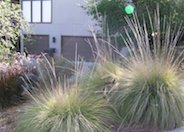
Common name:Deer Grass
Botanical name:Muhlenbergia rigens
The Deer Grass is a warm season perennial that forms dense clumps from the base. The spike-like flower stalks grow 2'-3' tall and this grass has striking foundation form. The Deer Grass is native to California, is drought tolerant, and is a beneficial insect plant.
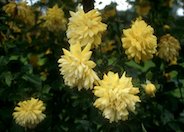
Common name:Climbing Rose, Golden Showers
Botanical name:Rosa 'Golden Showers'
This climbing rose has dark green, glossy foliage with lightly fragrant flowers that are loosely petaled and change from golden yellow fading to cream. There are few thorns on this vine and can grow 6'10' tall, arching gracefully.
| Designer: | Open Textured Fence |
Photographer: GardenSoft |
Soils and Compost:
Incorporate compost 6" into your soil to retain water, reduce compaction, feed earthworms, and provide valuable nutrients to your plants.
Water Saving Tip:
Be sure to fix all leaks promptly no matter how small they may seem.
Integrated Pest Management:
Attract, or buy beneficial insects such as ladybugs and lacewings to control pest outbreaks in your garden.

